In this article, you’ll learn:
Updated February 2021
We at Pics.io each day communicate with small and medium-sized companies and hear the same question: How are you different from Google Drive?
We understand. We’d ask it too if we were looking into digital asset management. Google Drive is a simple and useful tool and, frankly, at Pics.io, we couldn’t work without it as we actually work on top of Google Drive. It’s great for creating and managing documents and collaborating with coworkers. And it’s about as inexpensive as software can get!
Can you use it to manage thousands of images and files and important brand assets? Yes, of course. Is it the best tool for that? Nope. If you’re looking into digital asset management you may have started to notice the cracks in Google Drive and how hard it can be to manage lots of files and lots of users. From finding the right stuff to maintaining consistency & ensuring the right access to the right people, Google Drive often becomes more and more difficult to manage as the number of files and number of users grow.
So, when we hear “How are you different from Google Drive?” it’s often prefaced by “Our Drive has become a nightmare.”
Here are some of the main differences between Google Drive and digital asset management . . . And if these things sound familiar, you really need Pics.io DAM asap!
Access the right assets at the right time
If the right people don’t have access to the right material when they need it, your solution is not working. How many times have you received a file link, even from an internal colleague, and seen the Google Drive Screenshot with a message “You need permission to access”.
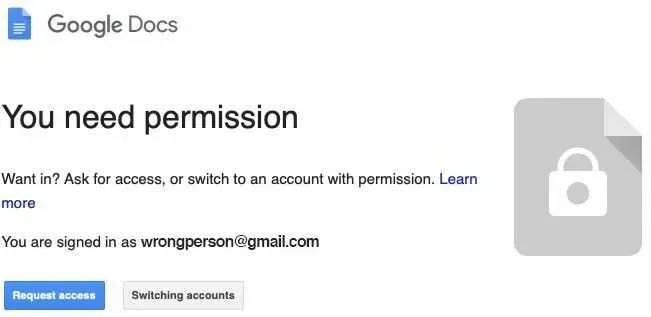
It happens all the time because Google Drive is largely built as a personal work repository. Control of a file is with an individual and they have to click into “Advanced” to be able to share in a reasonable manner. Sure you can have Shared Drives but does every employee have the right to put whatever they want in there? That can easily turn a well-intentioned, neat collaborative area into a swamp of personal files that no one can sort through.
Most companies and organizations work with outside partners like agencies, dealers, and perhaps even directly with customers. They aren’t part of your team at Google, so how do you manage what they have access to? You can invite them for broad access to your Drive or you might have to invite them to individual files. That can be fine for one or two partners, but what about 100, all with slightly different access needs?
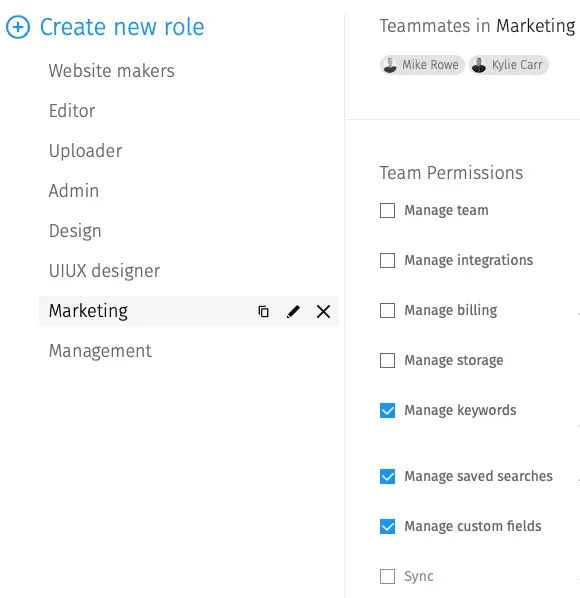
With digital asset management you can create permission levels for individuals or groups of users and provide varying levels of access to groups of files. For example, you need your partners to have access to brand and product images, or when you need the design team to access RAW camera files. With digital asset management, you create permission groups that have access to just the relevant files and invite your partners individually or in bulk. They can then go in and get what they need when they need it. They won’t bother you for fulfillment requests and they won’t run up against “request access” warnings.
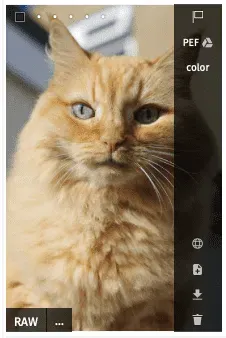
Search and find the right assets easily
Searching in Google Drive is good for indexed files like documents and spreadsheets. For images, videos, and other files, it’s less successful unless you know the file name. And who always knows the file name?! It is likely that you are tired of relying on guesswork on how your designer organized her Drive folders for that new project you’re working on together? Afraid you won’t be able to type in the right keyword to locate the file outside of her folder framework? Terrified she hasn’t shared you on the documents you’ve procrastinated on reading before your meeting in five minutes?
The fundamental difference between searching in Google Drive and searching in a digital asset management system comes down to metadata. Metadata is the information about your information; the contextual data associated with your files that can help your users find the content and understand how to use it. Most people never think about metadata, even though it is one of the most important things on which the internet and modern communications are built.
With a digital asset management system, adding metadata to files is a core feature. You can add descriptions, tags, and rights information, basically anything you want to help describe the file. Users can then search and hit on metadata associated with a file to find what they need. (Here’s a comprehensive guide on metadata to help you learn more how to use it in the best way for your work.)
Recently, Google Drive has added labels to help you find your assets quicker. Of course, this was a great step forward, but it didn’t really solve the problem of metadata management. In contrast, DAM gives you much wider metadata options, with keywords, picklists, and so on to manage your data.
See and feel your assets
Designed for storing your assets, Google Drive doesn’t care about their visual representation. DAM in this case is more visually pleasing. File previews, automatic thumbnails, visually inspired layout – these do not only feast your eyes but help you be more productive.
When you see your file preview, you don’t have to waste your time opening and closing it to find the right version. Also, map, grid, or list views allow you to adjust your media library to what is more convenient to you.
And no doubt, when you have such a nice presentation of your assets, you’re more eager to access and work in your library. This is why so many creators are fans of DAM.
Control the versions of your assets
With anyone allowed to upload to your organization’s Google Drive, you could have 10 different versions of the same logo coming up in a search. It can be impossible to know which one is the most recent, or which one you should use in a specific context. These different versions may have no information about how or where they were used, or who made the edits.
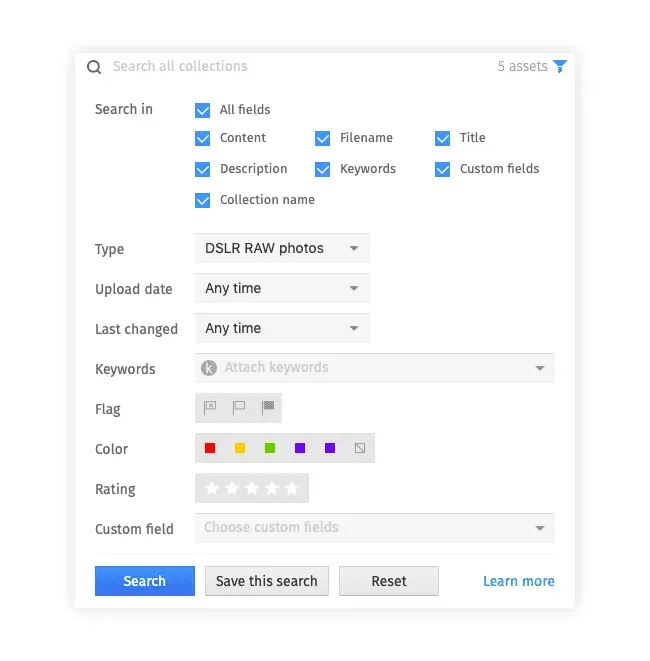
Digital asset management puts control of your brand in your hands. As a repository of only approved assets, all users know what is current, and contextual information in the metadata lets users know how and when they can use the content. You can add information about license rights, including attaching documents like release forms to images, and use expiration dates to close off access to outdated material.
In Pics.io we have the simplest version control ever, when all team members are on the same page concerning the latest asset version. New revisions are simply piled up on top of each other, like layers in Photoshop, and you can’t mess up this order. Revisions are also marked with bright numbers in the chronological order, and the most recent version always stays on top. This simple and straightforward organization leaves us virtually no chance to confuse different versions or overlook some changes. And there’s no need to disturb team members to decide which revision is the final one.
Support any asset format
Google Drive does not support all the file formats you need for your work. Technically, you can upload anything to your cloud storage. But this doesn’t mean you’ll be able to open and preview every file you upload. Pics.io supports a considerable variety of media formats: images, raw photos, videos, vector illustrations, fonts, and 3d images. If you are a designer, you’ll be happy to learn that Pics.io supports major file formats you may need in your work.
Collaborate with your team
As said, Google Drive is more about individual work than teamwork. Any collaboration in Google Drive is reduced to sharing your assets. (And even here you have to go into the trouble of double-clicking your mouse, entering email, and so on.)
It’s a completely different situation with Digital Asset Management. From the very beginning, your media library is visible to your whole team, without the need to share assets separately. Besides, your team members are free to comment under assets, tag their colleagues, and even place visual markers.
So what’s the difference between Google Drive and Digital Asset Management?
That’s easy! Your Google Drive is all about users. This is why when you upload files to your storage, they’re private until you decide to share them. Google Drive is also focused on storing your assets. And this presumes that you know where you placed your files and how you named them.
To compare, Digital Asset Management is more about assets. Your uploaded content is accessible to your team by default unless you make some restrictions. And you don’t have to care about configuring any sharing settings. It’s also about easy access to your assets, regardless of whether you remember the file name and location or not.
Add Pics.io to Your Google Drive
If you are already using Google Drive and get in touch with the described problems in your everyday workflow, it is time to think about the cloud management platform that will raise the efficiency of your organization.
Pics.io DAM works on top of your Google Drive. It's a cost-effective DAM solution based on your cloud storage.
(*Now it also works on top of Amazon S3. We've also released its own storage & became known as an all-in-one DAM solution. So now you don’t need to go into the trouble of setting up storage or configuring permissions.)
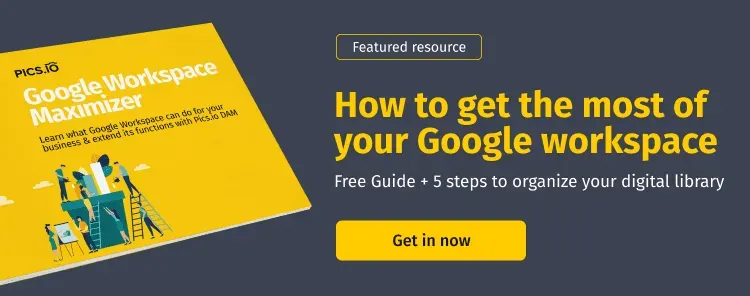
Yes, we use your unlimited Google Drive storage & make the most of it. So, you don’t have to migrate your files anywhere. Nor do you have to pay twice for storage with other DAM services. That’s a real bargain & many of our users can’t agree more:
What we really like about Pics.io is that it allows you to build everything off your Google Drive. It’s really great as we’re already paying for Google Drive to store all our files in the cloud, so it seems kind of silly to pay twice, right? With Pics.io you get the same unlimited storage for the same effective price!”
Ross Cromartie | President | RocketBrand
So, if you understand that your files are in a total mess on your Google Drive and it seems it stops your business development, please reach out and let’s start working on the development of your perfect partnership with Pics.io digital asset management system. You can explore Pics.io on your own. Or book a free demo and ask our expert everything you want to know about how DAM can help your business!



